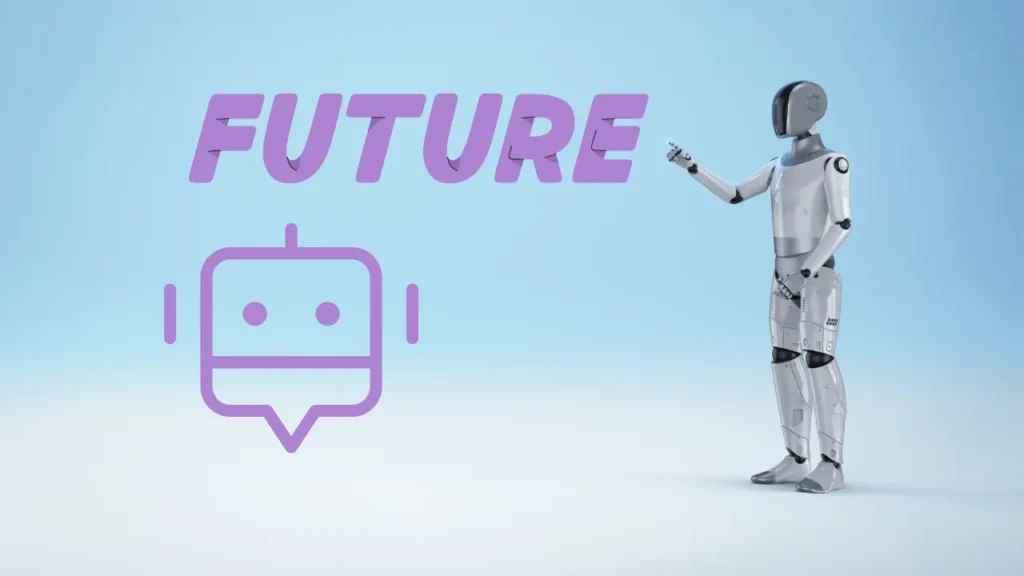Generative AI at SAP is revolutionizing business innovation. SAP is harnessing the immense potential of artificial intelligence to enable a new era of efficiency, creativity and strategic decisions as companies embrace ever-smarter automation.
But how does SAP’s technique of AI distinguish itself in 2025?
SAP could transform the way we do business with the potential of generative AI by automating business processes, enabling a personalized customer experience and unlocking even better data-driven insights. Businesses with SAP software use AI-driven technologies to stay innovative and gain a competitive edge.
Experts including Christian Klein, SAP’s CEO, emphasize AI’s role in redefining enterprise technology. From predictive analytics to intelligent automation, SAP’s AI-driven ecosystem offers endless possibilities.
To avoid AI detection, use Undetectable AI. It can do it in a single click.
Table of Contents
How SAP is Using Generative AI?

The worldwide leader in enterprise software, SAP is adopting Generative AI to improve the efficiency of business, innovation, and automation. SAP is revolutionizing the way organizations operate by embedding AI capabilities across its SAP Business Technology Platform (BTP) and core applications.
AI driven business process: SAP is integrating Generative AI natively into SAP processes to enable efficiency and automation of processes with increased accuracy. AI predictive analytics and automation options are helping businesses to be transformative by reducing the time spent on manual processes and eliminating errors.
Using AI to transform the customer experience: SAP is applying Generative AI to transform customer engagement by implementing chatbots, virtual assistants and AI-driven insights.
Improving supply chain and logistics: With Generative AI, SAP enables companies to enhance their supply chain management, prepping for fluctuations in demand, resource routes, and wastage.
AI driven financial insights and automation: Machine learning and Generative AI improve financial forecasting, fraud detection, and compliance management among the domains SAP’s AI capabilities cover.
AI driven human resources (HR) strategies: Generative AI in SAP SuccessFactors enhance talent acquisition, employee engagement and workforce planning.
SAP’s responsible AI approach: SAP focuses on ethical AI practices through enhanced data privacy and choice, effective data security, and transparency. The organization adheres to principles of ethics in artificial intelligence so as to avoid bias and maintain fairness.
SAP’s Generative AI in Supply Chain Management

The contemporary economy is multi-faceted, fluid, and susceptible to disturbances. SAP’s Generative AI is transforming supply chain management (SCM) by allowing organizations to forecast demand, streamline logistics, and automate operations.
Through automation, instantaneous analysis, and AI-driven business analytics, SAP is assisting organizations in laying the foundation for robust, effective, and intelligent supply chains.
AI driven demand forecasting: Demand forecasting is a key component and, of course, requires to be as accurate as possible to avoid intermediaries overstocking, or running out of stock.
SAP IBP uses Generative AI and machine learning to review historical data, including market trends and other external elements, to create accurate forecasts.
Intelligent supplier management: SAP enables enhanced supplier relationships with AI based supplier evaluation and risk assessment options.
Warehouse and inventory optimization: SAP’s Generative AI optimizes warehouse operations which improves the inventory accuracy, utilization of space and faster order fulfillment.
Real time logistics and route optimization: Transportation and logistics account for majority of supply chain management costs. SAP uses AI-based logistics options to enhance routing, lower costs and shorten delivery periods.
Sustainability in supply chain with AI: Sustainability is a top priority for businesses around the globe. SAP’s AI driven innovations enable businesses to cut down on carbon emissions, waste, and energy expenditure.
AI driven risk management in supply chain: Supply chains are particularly vulnerable to surprise disruptions including natural disasters, geopolitical tensions, or economic downturns. SAP’s Generative AI identifies potential risks, and recommends proactive measures to prevent disruptions.
SAP AI Ethics and Responsible AI Use

SAP has established ethical AI guidelines to direct the correct application of this new technology. To improve AI governance norms, SAP collaborate with governments, business leaders, and academic institutions.
Read Also >>> Does APA Have Citation for AI Generated Content in 2025?
One of the primary issues with AI ethics is algorithmic bias, which may contribute to unjust or discriminating outputs.
SAP strives to reduce AI bias by doing the following:
- Diverse training data
- Bias detection algorithms
- Continuous model improvement
As the number of rules governing data worldwide continues to grow, SAP provides artificial intelligence (AI) technologies that adhere to legislation such as the CCPA, GDPR, and ISO 27001. Decisions implemented by AI that interacts with users should be understandable and clear.
SAP helps companies to confirm and trust AI-driven outputs by providing an explanation for AI decisions. SAP integrates ethical AI into every industry for every business. To promote equity, inclusivity, and compliance, ethics considerations have been incorporated into the design of every AI application.
For long-term AI integrity, SAP has established an AI Ethics Board to oversee ethical compliance, industry standards, and AI innovation.
Challenges and Limitations of Generative AI at SAP

Generative AI transforms business processes by enhancing automation, efficiency, and decisions. Although SAP has the ability to implement generative AI throughout its ecosystem to provide customers with a highly reliable, flexible, and human-centered AI, it also confronts obstacles and constraints.
These include computational expenses, AI biases, and data security threats. For the moral, effective, and responsible implementation of AI in business applications, these obstacles have to be overcome.
Data Privacy and Security Concerns
One of the challenging responsibilities for SAP’s generative AI is data privacy and security, which requires adherence to international laws including the CCPA, GDPR, and ISO 27001, among others. Any new technology that is created processes so much corporate data that it is susceptible to unwanted access and data leakage.
Because SAP operates worldwide, it has to abide by stringent laws (such those pertaining to data protection) in other jurisdictions. AI-based systems are vulnerable to malicious AI-generated content, hacking, and data leakage.
Bias and Ethical AI Challenges
Generative AI models can embed biases found in the training data, producing biases towards certain groups or segments. SAP needs to maintain fairness and unbiasedness of its AI decisions. AI models are trained on historical data, which is vulnerable to societal or organizational biases.
Furthermore, generative AI models act as black boxes. It is difficult to describe the process and motivations behind decisions. Such programs’ outputs may at times be auto-generated and wind up confirming prejudices, false information, or immoral suggestions.
High Computational Costs and Resource Requirements
To process large datasets, generate responses and refine algorithms, Generative AI needs massive computing power. This creates a challenge for cost-efficiency and scaling. High-performing GPUs, cloud power, and power-consuming operations are necessary to train large-scale AI models.
Real-time business operations can be affected due to longer processing times for AI-generated responses. Because of limited infrastructure, small and mid-sized businesses might find it difficult to adopt resource-heavy AI models.
Integration Challenges with Legacy Systems
Many businesses use supply chain and ERP systems that are outdated and may not be able to interface with SAP’s generative AI products. AI finds it difficult to access data from legacy systems because of their non-standard forms.
It is possible that outdated IT infrastructures lack the processing capacity required to operate AI applications. Businesses may find it difficult to transition from traditional processes to AI-based automation.
Accuracy and Hallucination Risks in AI-Generated Content
Generative AI can also provide incorrect, inaccurate or irrelevant responses, leading to operational risks. This phenomenon, known as AI hallucination, is something that can affect business decisions in addition to data accuracy.
AI models can generate inaccurate or fabricated responses. AI is prone to misinterpretation of business queries and may serve someone irrelevant outputs. Models trained on static data can miss the latest business or market trends.
Ethical and Legal Compliance Challenges
With the continued evolution of AI regulations, organizations may need to adapt their practices to meet the requirements of these laws and standards. Failing to do so leads to legal risk and reputational harm.
With a patchwork of international laws varying by country and industry, complying with AI regulations worldwide can be a challenge. If AI produces a mistaken recommendation, businesses have to decide who is responsible. Instead of completely replacing human decisions, AI should improve it.
Future of Generative AI at SAP

Automation driven by AI could optimize processes and workflows and help reduce manual effort in finance, HR, and supply chain management. Generative AI could deliver real-time business intelligence that enriches forecasting and decisions.
Entering Industry Cloud with SAP Business Technology Platform, the idea is that AI could help them configure their SAP applications to industry requirements. AI could handle invoice processing, expense tracking, and financial reporting.
AI models predicting the future could help in inventory management, logistics, and demand forecasting. AI could forecast disruptions and recommend alternative sourcing plans. AI driven insights could enable carbon footprint minimization and green logistics.
Self-healing supply chains, driven by AI, could be able to coordinate with vendors and mitigate risks. Generative AI could perform personalized product recommendations and generation of the content. This could enhance customer satisfaction, customer retention, and reduce the need for complex queries to be handled by AI chatbots.
AI-driven insights could enable businesses to create personalized marketing campaigns with higher conversion rates. SAP could further advance AI fairness testing. Enterprise data could be protected as AI models could operate with a strict data protection policy.
SAP could operate to align its AI advancements with global AI governance. Business employees could be able to fine-tune AI applications without much training. Deeper business insights with AI-enabled advanced analytics through SAP BTP could be possible.
Integration of AI options with existing SAP applications and third-party software could be simplified. Digital twins of business processes could enable organizations to model scenarios and improve decisions.
Automating repetitive operations through AI could free up resources for strategic efforts. AI modals could predict industry operations and business needs to stay ahead of the competition.
Conclusion: Generative AI at SAP
In 2025, we could also have Generative AI at SAP — unlocking business innovation, transforming operations, and improving decisions, driving efficiency. SAP’s AI-driven options enables businesses to automate complex workflows, offer deep data insights and remain competitive in a rapidly changing digital economy.
SAP’s Generative AI in SAP Business Technology Platform enables businesses to improve productivity, deliver personalized customer experiences, and achieve secured and sustainable growth. The fusion of AI with SAP’s enterprise options is shaping the future of business.
How do you see Generative AI at SAP impacting your industry in 2025?
Are you already exploring AI-driven options in your business?
Share your thoughts in the comments below!
FAQs: Generative AI at SAP
What is Generative AI and how does it relate to SAP?
Generative AI refers to a subset of artificial intelligence that focuses on creating new content, such as text, images, or code, based on existing data. Within the context of SAP, generative AI can be integrated into various SAP options to enhance automation, improve user experiences, and streamline business processes.
SAP uses AI programs and machine learning techniques to develop options that can predict outputs, generate insights, and optimize workflows, helping businesses to automate tasks and reach data-driven decisions.
What are some common use cases for Generative AI at SAP?
There are several compelling use cases for generative AI within SAP environments. For example, SAP can employ large language models for natural language processing tasks, such as generating reports or summarizing data trends.
In addition, generative AI can facilitate the creation of AI models that predict customer behavior, optimize supply chain management, and enhance workflow automation. These applications not only improve efficiency but also empower teams to focus on strategic initiatives rather than routine tasks.
How does SAP AI integrate with existing SAP systems?
SAP AI is designed to seamlessly integrate with existing SAP systems, using the SAP ecosystem to enhance AI capabilities across various SAP options. By embedding AI into traditional ERP systems, organizations can benefit from real-time analytics, predictive insights, and automated processes.
This integration allows businesses to enhance their business context based on data-driven insights while maintaining the integrity of their existing SAP infrastructure.


